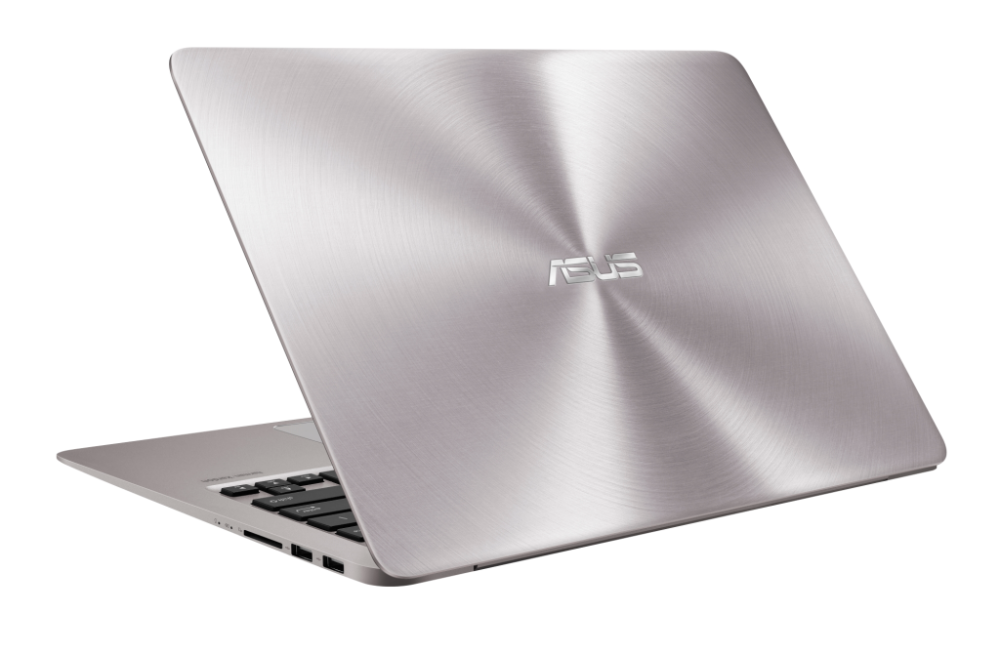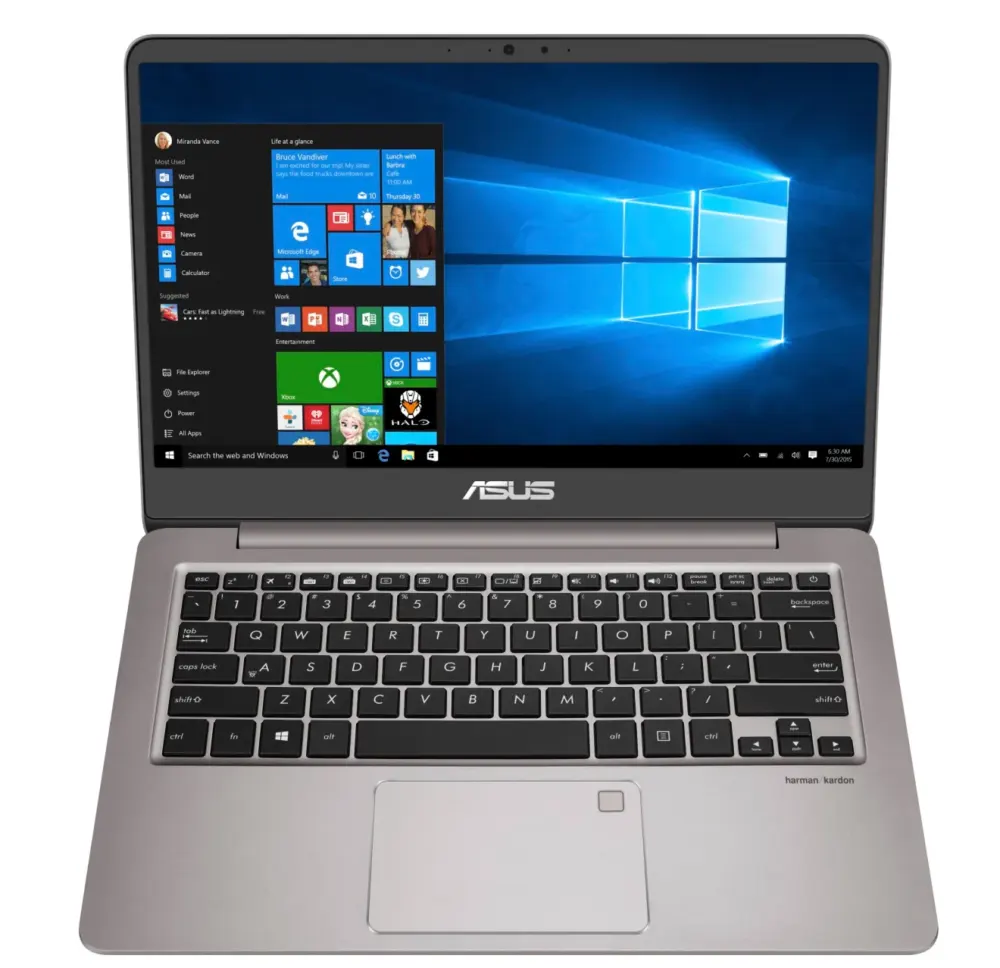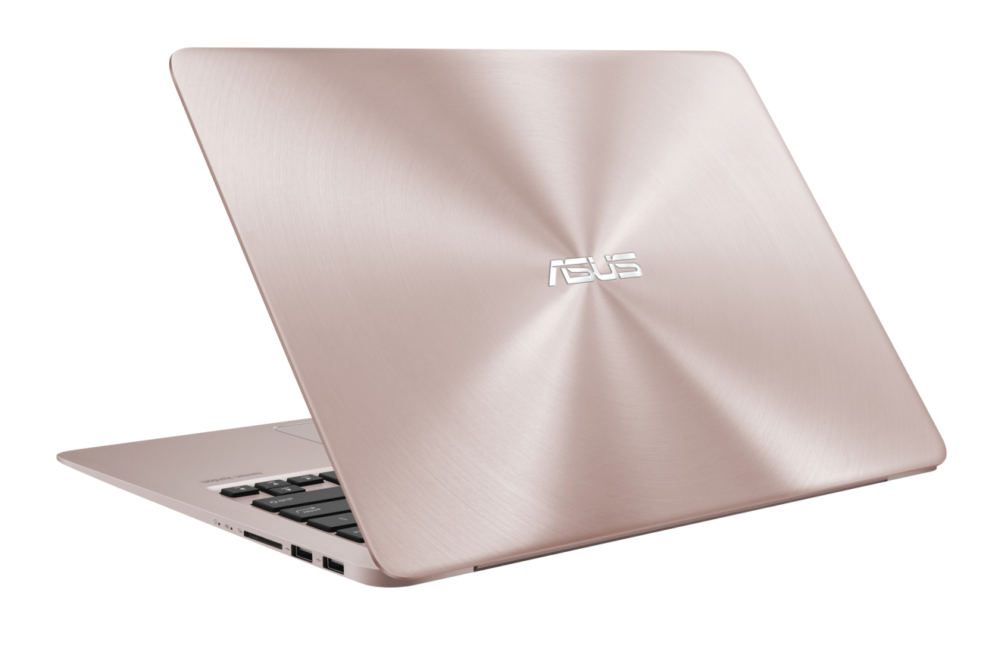
Asus ZenBook UX410UA Review
Table Of Contents−
I’ve lost count of the number of laptops I’ve reviewed over the past two decades, but it’s in the hundreds. Enough that it feels like I’ve built an internal compass that can tell me almost instantly whether a laptop is good, bad or indifferent within moments of picking it up and scanning the specs.
Admittedly, this isn’t an ability on par with Midas’ golden touch or instant healing, but it’s handy nonetheless. And within a few minutes, it was clear the Asus ZenBook UX410UA sits firmly in the “good” realm.
The first plus sign is the processor inside: an Intel Core i3 chip is almost a seal of quality in itself. While this is in the lower echelons of Intel’s Core series, it’s quick at tackling daily tasks. It’s only if you’re doing intense work – encoding video for instance – that it will struggle.
Don’t be put off by the 4GB of RAM either. Yes, 8GB is better, but in everyday scenarios a 4GB helping is plenty. If the machine is starting to feel slow, close some browser windows or programs and it should return to normal speed.
In terms of specification, the only amber flag is the 128GB SSD (solid state disk). You’ll need an external drive to store photo, music and video libraries, or rely on cloud storage.
Recommended reading: All Chromebook Plus laptops compared
Asus ZenBook UX410UA review: How portable is it?
More positive news comes in the design. Despite having a good-sized 14.1-inch screen, the ZenBook UX410UA weighs 1.4kg. That’s not featherlight but light enough that you needn’t worry about it weighing you down in a bag all day.
What you can’t get away from, despite Asus’ best efforts to reduce the screen bezel width, is that this isn’t a true ultraportable. It measures 32.3cm wide, 1.9cm tall and 22.3cm deep with the lid closed, so it will fill a rucksack.
Unlike many modern ultraportables, it can’t be powered over the USB-C connector, and the moulded plug Asus supplies is a chunky beast. If you intend to do more than six hours of work then you’ll probably need to sling it in the bag, too. Asus claims up to eight hours of life, but my battery rundown tests suggest that’s optimistic.
Design and aesthetics

When it comes to looks, I’m in two minds. I quite like the swirling alloy finish of the lid, but some people find it too ostentatious even in its grey incarnation; I haven’t seen the rose metal alternative, but I suspect it’s even more divisive.
Less subjective is that this all-metal laptop feels durable and well-made. Most laptops around this price are plasticky and insubstantial, but when you pick up the Asus ZenBook UX410UA there’s no hint of flex, just cold metal.
Let’s also pause for a moment to admire the ports on offer. You have two choices if you want to connect a screen, with a full-size HDMI port next to a USB-C connector – both fine inclusions.
They sit on the left-hand side, next to a 3.5mm jack and the first of three “normal” USB ports. The first is a USB 3.1 port, with two slower USB 2.0 ports on the right-hand side along with a handy SD card reader.
There’s no Ethernet port, but Asus generously supplies a USB-to-Ethernet dongle in the box along with a protective travel sleeve. Naturally, the Wi-Fi is the latest 802.11ac standard, with Bluetooth 4.1 to complete the usual wireless suspects round-up.
Asus ZenBook UX410UA review: Keyboard, trackpad and screen quality
The final giveaway of a laptop’s quality is the screen. All too often I see a cheap panel thrown into budget laptops, and I hate them. They suck away the pleasure of using a laptop; whether you spend £300 or £3,000, I believe you should enjoy picking up your chosen product (even if that enjoyment stems from the fact it’s an absolute bargain).
Here, I’m delighted by Asus’ choice. It was immediately obvious that this is a bright and vivid screen with excellent viewing angles, and this was backed up by the measurements from my i1 Display Colorimeter. This returned a maximum brightness of 354cd/m2 and a 95% coverage of the sRGB gamut – in layman’s terms, that means its colours are highly accurate.
I also think a resolution of 1,920 x 1,080 makes total sense on a 14.1-inch screen because that means text will always be easy to read but photos and videos will still look detailed. If you choose a screen with too high a resolution then you get the detail but system text can become too small.

The keyboard is fine. Asus makes a big play of the keys’ 1.5mm travel, but in my view, they’re a bog standard affair. Nothing to write home about; nothing to complain about.
The trackpad is far larger than average. If you’re a master of using Windows gestures then you should enjoy using it. I’d have preferred to see separate clickable buttons at the bottom, but can live with them being built into the pad.
Finally, a word on audio quality. While there is a 3.5mm jack on the left-hand side, I found the stereo speakers surprisingly punchy. Of course, there isn’t much bass – that’s a physical limitation for any slim laptop – but vocals and strings came through clearly and with plenty of volume.
Asus ZenBook UX410UA review: Should you buy it?

So we come to the crux of the matter: should you buy the Asus ZenBook UX410UA? If you only have £600 to spend and can live with the limited storage, then the simple answer is yes. It’s the best laptop I’ve seen for this price. (Right now, it’s selling for £570 from Amazon.)
Personally, I’d choose the £720 version. This has a slightly faster processor but, more importantly, doubles the memory and SSD size. Just note that the link above goes to John Lewis, which only sells the Rose Gold version. You may want to see that in the flesh before you buy…
NEXT UP

Terminator 2 in 2024: liquid metal and soft robots are here today
Metals which stay fluid at room temperature aren’t a science fiction invention. In this T2 revisit, we explore liquid metal and soft robots.

Oracle to expand cloud and AI footprint in Japan with $8 billion investment
Oracle has announced that it will invest more than $8 billion over the next decade in cloud computing and AI in Japan.

Paolo Frizzi, Founder and CEO of Libraesva: “There is no ideal ‘one-size-fits-all’ formula for good security”
In this “Threats” interview, part of our cybersecurity series, find out how to fight phishing attacks from Paolo Frizzi, Founder and CEO of Libraesva